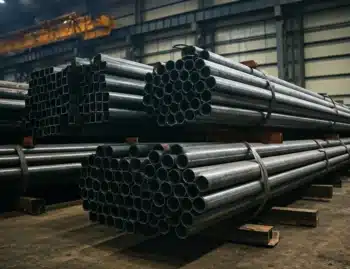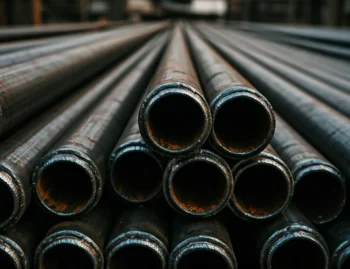
Citric acid is a weak acid that occurs naturally in fruits, such as lemons and limes. Alternatively, some commercially available products have citric acid in them. Weak acids act as a buffer in acid-base chemistry and work to mitigate oxidation-reduction effects.
Citric acid is a small molecule tribasic acid providing a wide range of protection. The protection is a result of three locations on the citrate molecule that can readily interact with materials. Citric acid is readily soluble in water and is therefore a non-permanent solution for protecting steel.
How does it protect?
Despite stainless steel having a naturally occurring protective layer of chromium oxide on its surface, citric acid protects steel by creating an additional passivating layer across the surface of the steel.
Passivation is a chemical treatment of one material (typically the surface of a material) with a different material (liquid, solid, or even gas). Creating the passivating layer on the steel causes potentially corrosive materials to interact with the passivating layer before it can interact with the steel below.
Prior to adding a passivating layer to the steel, one must ensure that the steel is clean and free of debris and oils. The passivating layer will not fully form if this is done improperly. As a result, the steel below will not be fully protected. As a result, protecting your stainless steel is inherently a two step process.
Reducing the citrate molecule on the surface of the steel is how you gain protection. This process removes free iron from the surface of the steel resulting in a protective oxide layer that is inert. The rusting process is due to oxidation of iron.
Removing the free iron from the surface reduces the availability of iron to rust. It also helps form a thicker boundary of chromium oxide at the surface. The combination of removing free iron and creating a thicker boundary layer of chromium oxide creates a larger chemically resistant surface on the steel.
How is it used?
There are many commercially available citric-acid based cleaners since they aid in rust removal. The ASTM A967 document outlines specifically the use of citric acid for passivation of steel parts.
Often, there will be a cleaning step. Then, the citric acid containing solution is used on the stainless steel and the liquid is allowed to air dry. The air drying process is paramount as it helps form the protective layer of citric acid on the surface.
Conclusion
Stainless steel by its very nature is resistive to rusting. However, the real-world results in many scenarios where the resistive nature of stainless steel is compromised.
Therefore, a passivating layer is often useful to enhance the protective, naturally occurring layer of chromium oxide on the surface of the steel, thus providing an extra layer of protection.











